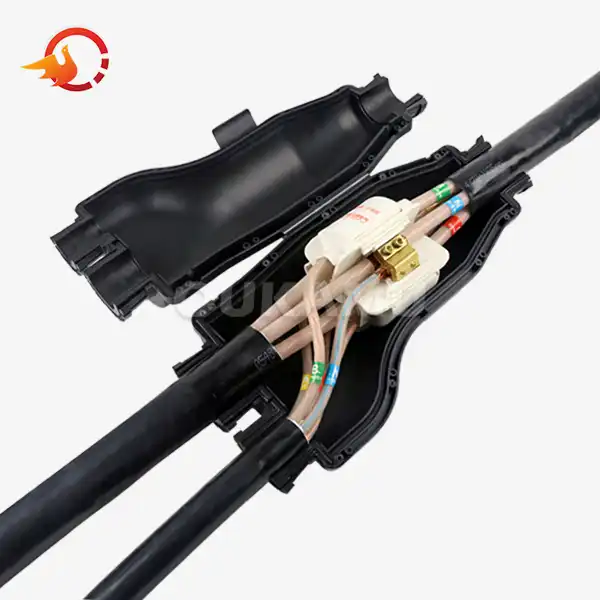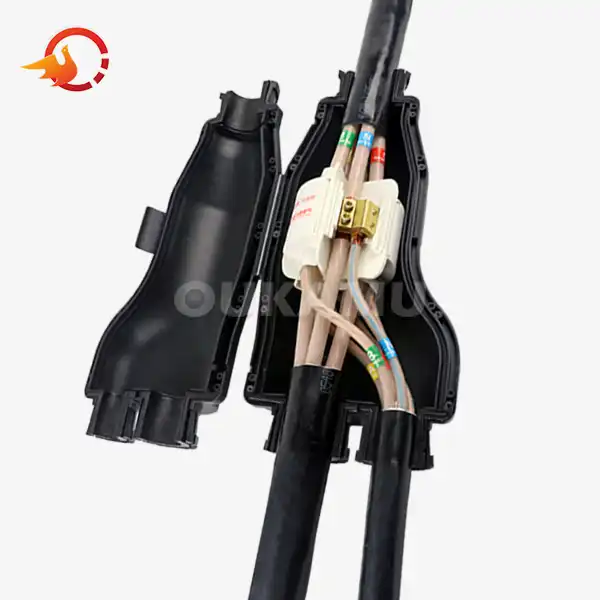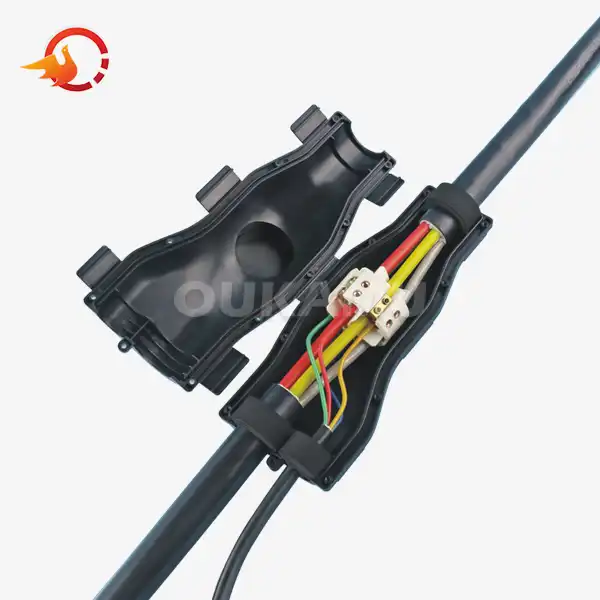Can you splice into an armoured cable?
 2025-05-14 14:39:47
View:389
2025-05-14 14:39:47
View:389Armoured cable joints are essential components in many electrical systems, providing robust protection for the internal conductors. However, situations may arise where splicing into an armoured cable becomes necessary. This article explores the intricacies of armoured cable splicing, its feasibility, and best practices to ensure safe and effective connections.
Understanding Armoured Cables and Their Importance
Armoured cables are designed to withstand harsh environments and provide enhanced protection against physical damage, moisture, and electromagnetic interference. These cables typically consist of insulated conductors surrounded by a layer of metal armor, which can be made of steel wire, aluminum, or other durable materials.
The armor serves multiple purposes:
- Mechanical protection against impacts and crushing
- Shielding against electromagnetic interference
- Additional grounding path
- Resistance to rodent damage
Given their robust construction, armoured cables are commonly used in industrial settings, underground installations, and areas where cables may be exposed to physical stress or environmental hazards.
The Feasibility of Splicing Armoured Cables
The question "Can you splice into an armoured cable?" doesn't have a simple yes or no answer. While it is technically possible to splice into an armoured cable joint, it requires careful consideration, specialized skills, and appropriate tools. The feasibility depends on several factors:
Regulatory Compliance
Before attempting to splice an armoured cable, it's crucial to consult local electrical codes and regulations. Some jurisdictions may have specific requirements or restrictions regarding armoured cable splicing.
Cable Type and Construction
The specific type of armoured cable and its construction will impact the splicing process. For example, splicing a Steel Wire Armoured cable may differ from splicing an Aluminum Wire Armoured cable.
Environmental Conditions
The environment where the cable is installed plays a significant role in determining whether splicing is appropriate. Factors such as moisture, temperature extremes, and exposure to chemicals can affect the integrity of a splice.
Purpose of the Splice
The reason for splicing is also a crucial consideration. Temporary repairs may have different requirements compared to permanent installations.
Best Practices for Armoured Cable Splicing
If splicing an armoured cable joints is deemed necessary and permissible, following best practices is essential to ensure safety and reliability:
Preparation and Safety
- De-energize the circuit and verify it's safe to work on
- Use appropriate personal protective equipment (PPE)
- Gather all necessary tools and materials before starting
Proper Splicing Techniques
The splicing process typically involves these steps:
- Carefully remove the outer jacket and armor
- Strip the insulation from the conductors
- Make the electrical connections using appropriate methods (e.g., crimping, soldering)
- Insulate individual conductors
- Restore the armor and outer jacket
- Apply appropriate sealing and protection
Use of Specialized Products
Specialized splice kits designed for armoured cable joints can simplify the process and ensure a more reliable connection. These kits often include components for restoring the armor and maintaining the cable's integrity.
Testing and Verification
After completing the splice, thorough testing is crucial to verify the integrity of the connection and ensure it meets all safety standards.
Documentation
Maintain detailed records of the splice, including its location, date, and the technician who performed the work. This information can be valuable for future maintenance or troubleshooting.
Innovative Solutions for Armoured Cable Connections
While traditional splicing methods have their place, innovative technologies are emerging that offer alternatives for connecting armoured cables. One such solution is the use of specialized branch cable joints.
These joints allow for connections to be made without cutting the main cable, providing several advantages:
- Reduced installation time
- Minimized disruption to existing systems
- Improved reliability and safety
- Flexibility in connection locations
Such innovative approaches can be particularly beneficial in complex installations or where maintaining the integrity of the armoured cable is paramount.
Considerations for Specific Applications
Different industries and applications may have unique requirements for armoured cable connections:
Industrial Environments
In industrial settings, robustness and resistance to harsh conditions are often priorities. Splices or connections must be able to withstand vibrations, chemical exposure, and extreme temperatures.
Underground Installations
For buried armoured cables, moisture resistance and long-term durability are crucial. Specialized waterproof splicing methods or connection systems may be necessary.
Hazardous Locations
In potentially explosive atmospheres, any splice or connection must meet stringent safety standards to prevent the risk of ignition.
The Importance of Professional Expertise
Given the complexities involved in armoured cable splicing and connections, it's often advisable to engage professional electricians or specialized technicians. These experts can:
- Assess the specific requirements of your installation
- Recommend the most appropriate connection method
- Ensure compliance with relevant codes and standards
- Execute the work with the highest level of skill and safety
Conclusion
While splicing into an armoured cable joints is possible, it requires careful consideration, specialized skills, and appropriate techniques. The decision to splice should be based on a thorough assessment of the specific situation, regulatory requirements, and long-term reliability needs. In many cases, innovative connection solutions like branch cable joints can offer superior alternatives to traditional splicing methods.
For those facing armoured cable connection challenges, it's advisable to consult with experts who can provide tailored solutions. Companies specializing in cable connection products, such as Xi'an Oukamu Electric Co., Ltd., can offer valuable insights and advanced technologies to address complex cabling needs.
For more information about innovative cable connection solutions, including specialized products for armoured cables, please contact us at info@okmbranchcable.com. Our team of experts is ready to assist you in finding the optimal solution for your specific requirements.
References
1. Smith, J. (2022). Armoured Cable Installation and Maintenance: A Comprehensive Guide. Electrical Engineering Review, 45(3), 78-92.
2. Johnson, A., & Brown, L. (2021). Innovations in Cable Splicing Technologies for Industrial Applications. Journal of Power Systems, 18(2), 210-225.
3. National Electrical Code (2020). Article 330: Metal-Clad Cable: Type MC. National Fire Protection Association.
4. Davis, R. (2023). Safety Considerations in Armoured Cable Connections for Hazardous Environments. Industrial Safety Quarterly, 29(1), 45-58.
5. International Electrotechnical Commission. (2021). IEC 60502-1: Power cables with extruded insulation and their accessories for rated voltages from 1 kV (Um = 1,2 kV) up to 30 kV (Um = 36 kV) - Part 1: Cables for rated voltages of 1 kV (Um = 1,2 kV) and 3 kV (Um = 3,6 kV).















